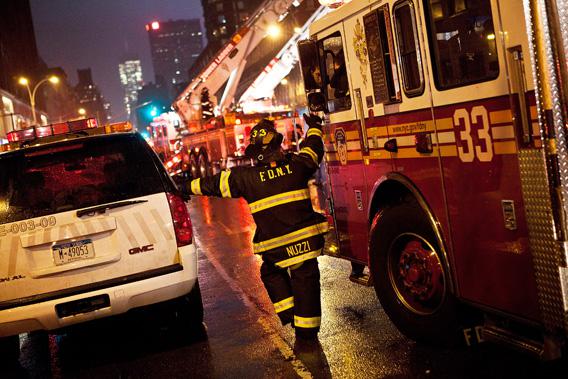Hurricane Sandy’s death toll was approximately 26 people in the United States as of Tuesday morning. The number is imprecise because, in some cases, authorities are still trying to determine whether the storm was responsible for the death. In which cases is it not clear whether a hurricane has killed someone?
Car accidents, heart attacks, and suicides. Each state has its own statutes or rules defining when a natural disaster is responsible for a fatality, but most states recognize both direct and indirect fatalities. A classic example of a direct fatality is wind blowing a tree into someone’s bedroom. Indirect fatalities occur when the storm creates environmental conditions that lead to a death. Fatal car accidents caused by torrential rains or flooding are indirect deaths, but storms can also be blamed for so-called “natural” deaths. The coroner or medical examiner has to make a judgment call in these cases. When people with severe emphysema die after losing access to life-sustaining oxygen tanks during a storm, or when someone dies of a heart attack cleaning up after a hurricane, medical examiners typically categorize those fatalities as storm-related. In rare cases, medical examiners have blamed suicide on a natural disaster. A Florida man, for example, committed suicide after Hurricane Charley destroyed his home and most of his worldly possessions in 2004.
The precise causes of death vary tremendously between hurricanes. In the aforementioned Hurricane Charley, most of the fatalities were the result of objects blowing into people, cars, or homes. There was only one drowning among the 31 deaths. In contrast, most of the Hurricane Katrina deaths that researchers were able to categorize were the result of flooding—victims either drowned or were trapped by floodwater. In Hurricane Ike, which hit Texas in 2008, carbon monoxide poisoning was the leading cause of death (13 fatalities), followed closely by cardiovascular failure (12). The deaths from Hurricane Isabel in 2003 were varied. In Virginia, seven people drowned, power outages killed seven, and six died in car accidents.
Got a question about today’s news? Ask the Explainer.
